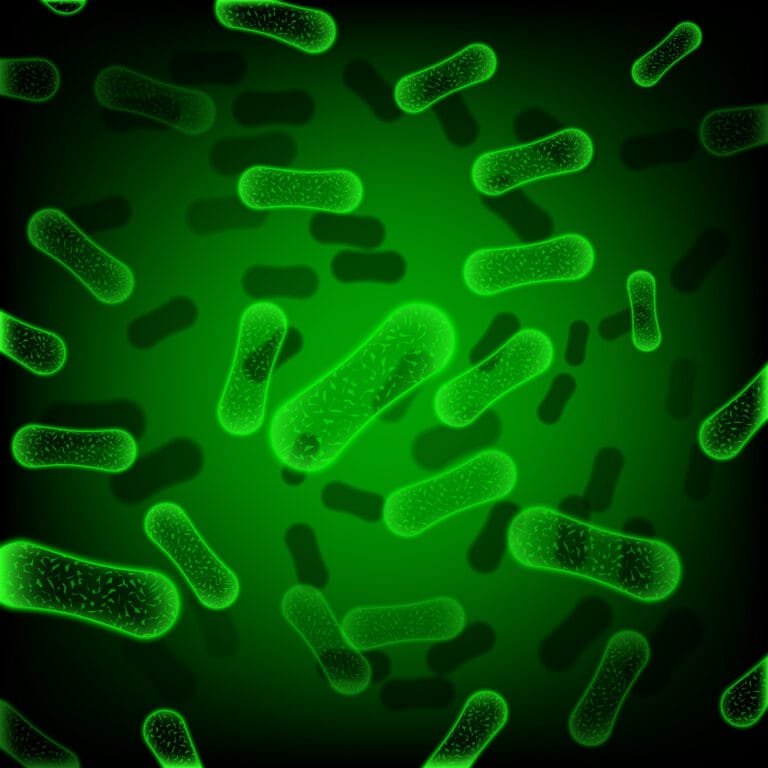
Small but Mighty: Gut Microbes Fighting Toxins in the Body

- The Human Microbiome
- The Microbiome and Chemical Compounds
- Microbiome Modulation of Toxicity
- Toxicant Modulation of the Microbiome
The Human Microbiome
The microbiome is the collection of genomes from all microbes that inhabit the human body. This differs from the terms microbiota and microflora, which refer specifically to the microbial communities found in particular areas of the human body. Since the early 1900s, studies have shown that microbiota and microflora influence nutrition and human health.
However, the term microbiome only emerged later, during the “omics” era, with the advent of advanced DNA sequencing technologies that made it possible to thoroughly evaluate the composition of microbiota.The human gut microbiota contains between 10 and 100 trillion microbial cells, with around 1,000 to 1,150 unique bacterial species, or about 150 times more genes than those encoded in the human genome. These microbial genes directly influence the levels of various metabolites in the human body, including amino acids, vitamins, antioxidants, isoflavonoids, and short-chain fatty acids.
Uniquely, they also metabolize foreign compounds such as xenobiotics, which are substances not naturally produced by the body and not expected to be present in large amounts. Human digestion of dietary components, such as plant polysaccharides, heavily depends on the enzymatic capabilities of gut bacteria. From this, we can see just how vital the gut microbiota is to human health. Therefore, it is essential to manage our diet, as the gut microbiota composition is strongly influenced by the intake of fruits and vegetables, carbohydrates, fats, and proteins.
Read more:
Don’t Be Afraid ! Bacteria can Also Be a Friend To Your Food Products
The Microbiome and Chemical Compounds
Microbes inherently have the ability to interact with and metabolize environmental chemicals, including those found in the human body. Five main categories of compounds metabolized by bacteria have been identified: azoreductases, nitroreductases, β-glucuronidases, sulfatases, and β-lyases. These chemical–microbial interactions are generally categorized into two types: microbiome modulation of toxicity (MMT) and toxicant modulation of the microbiome (TMM).
MMT refers to the transformation of a chemical by microbial enzymes into a form that is either more or less toxic to the body. In contrast, TMM describes the change in the microbial community due to exposure to a chemical, which can involve microbial gene regulation, enzyme inhibition, or even microbial death.
1. Microbiome Modulation of Toxicity
Microbes can influence the toxicity of a chemical through several mechanisms.
- First, they may chemically modify a substance using their enzymes.
- Second, they may alter the absorption or bioavailability of the chemical, making it more or less accessible to the human body.
- Third, they may interfere with the host’s detoxification processes by interacting with detoxification enzymes, either delaying or accelerating toxin elimination. This interference can cause the toxin to remain in the body for a longer period. For example, drugs containing acetaminophen can be converted by gut microbes into more toxic forms. Similarly, gut bacteria can either reduce or increase the absorption of heavy metals such as mercury or arsenic.
2. Toxicant Modulation of the Microbiome
Toxicant modulation of the microbiome (TMM) occurs when exposure to toxic substances disrupts the balance of gut microbes. This can happen in several ways: by altering gene regulation in microbes, inhibiting specific microbial enzymes, or killing beneficial bacteria—ultimately leading to microbial imbalance, or dysbiosis. This microbial disruption can weaken digestion, immune defense, and overall health.
Chemical substances that enter the body don’t just harm organs—they can also disturb the delicate balance of the microbiome, which is crucial for human health. When the microbiome is disrupted, it may lead to various diseases such as allergies, obesity, diabetes, autism, and intestinal inflammation.
A deep understanding of microorganisms is increasingly important in research, healthcare, and biotechnology-based product development. Through molecular biology testing, you can identify, analyze, and monitor gene expression with a high degree of accuracy. IML Research provides comprehensive molecular biology testing services, including DNA and RNA analysis, as well as microbial characterization using the latest technology.
Each test is conducted by a team of experts using valid and standardized methods to ensure accurate and reliable results. Entrust your molecular biology testing needs to IML Research, a trusted laboratory committed to supporting the advancement of science-based research and innovation.
Author: Safira
Editor: Sabilla Reza
Reference:
Koontz, J. L., Gillevet, P. M., & Donaldson, J. R. (2019). The role of the human microbiome in chemical toxicity. Current Opinion in Toxicology, 16, 109–117. https://doi.org/10.1016/j.cotox.2019.05.006c



